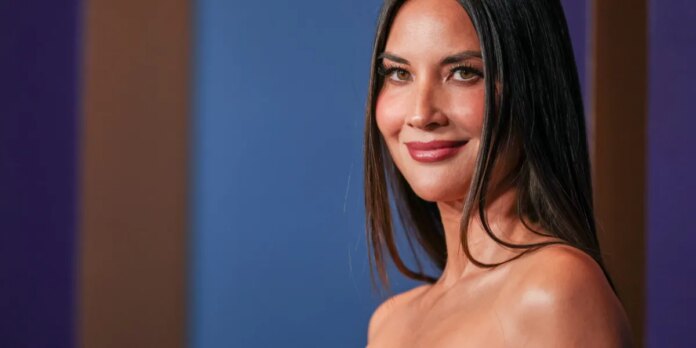What are the odds you’ll develop breast cancer in your lifetime? Not a woman’s average risk—13%, according to the American Cancer Society—but your personal risk based on your age, genetics, family history, and other risk factors?
That’s a statistic you should know off the top of your head, Dr. Thaïs Aliabadi, an OB/GYN in Beverly Hills, California, and cohost of the new podcast SHE MD, tells Fortune.
“I was diagnosed with breast cancer myself, so it’s a condition that’s near and dear to my heart,” she says. “I don’t want another woman to go through what I went through.”
According to Aliabadi, at 49 she had no genetic mutations, no family history of breast cancer, and her mammograms, ultrasounds, and MRIs were benign. However, she says a breast biopsy seven months earlier had shown precancerous cells. She knew other components of her medical history—such as having dense breasts and giving birth for the first time after age 30—heightened her risk. She determined her lifetime risk of developing breast cancer was 37%; the American College of Radiology considers women with a lifetime risk at or above 20% to be high-risk. Aliabadi asked her doctor for a prophylactic double mastectomy, a surgery in which both breasts are removed to lower chances of getting breast cancer.
“Someone with 37% lifetime risk, they need regular imaging every six months and I didn’t want to go through all that; I was too busy,” says Aliabadi, now 53. “I didn’t want to get diagnosed with breast cancer, I just didn’t want to deal with it. To me, that number was high, and it’s a very personal decision.”
Her doctors insisted a double mastectomy was unnecessary. Still, Aliabadi went through with the procedure. A week later, she was notified cancer had been present.
“Do you know how many doctors at my hospital approached me the following month—’cause I’d made a post on Instagram—and asked me, ‘How did you calculate your lifetime risk?’ And these were gynecologists,” Aliabadi tells Fortune. “I realized I got breast cancer so I can change this in the world.”
How do you calculate lifetime breast cancer risk?
Aliabadi says her dream is for every woman to know her lifetime risk of breast cancer—information that could potentially save her life.
Earlier this month, actress Olivia Munn announced on Instagram that she’d been diagnosed with luminal B breast cancer in 2023. The 43-year-old had tested negative for BRCA1 and BRCA2 gene mutations, and her imaging results were normal. In spite of this, Munn’s doctor, Aliabadi, assessed her breast cancer risk, which was also 37%. Further testing revealed cancer and Munn, too, opted for a double mastectomy.
“I wouldn’t have found my cancer for another year—at my next scheduled mammogram—except that my OB/GYN, Dr. Thaïs Aliabadi, decided to calculate my Breast Cancer Risk Assessment Score,” Munn wrote in a March 13 Instagram post. “The fact that she did saved my life.”
Aliabadi will soon offer a risk calculator of her own on the SHE MD website and declined to tell Fortune which algorithm she used on Munn. Several free variations are accessible online, including the Breast Cancer Risk Assessment Tool (BCRAT), the IBIS/Tyrer-Cuzick Risk Assessment Calculator, the Breast Cancer Surveillance Consortium (BCSC) Advanced Breast Cancer Risk Calculator, and the Black Women’s Health Study Breast Cancer Risk Calculator.
Each has advantages and limitations. The BCRAT, for example, is simple but based on limited biomedical data for nonwhite women. The IBIS/Tyrer-Cuzick tool eliminates race but incorporates more of your reproductive history, and the BCSC calculator doesn’t apply to women under 40. Collectively, they analyze factors such as:
- Age
- Age at time of first menstrual period
- Age at time of first childbirth
- BRCA1 and/or BRCA2 gene mutations
- Breast biopsy history
- Breast density
- Breastfeeding history
- Family history of breast and prostate cancer
- Height and weight
- Hormone replacement therapy history
- Menopausal status
- Oral contraceptive use
- Ovarian cancer history
- Race and ethnicity
Depending on the tool, you’ll be given your short-term risk of developing breast cancer within five to 10 years and/or your lifetime risk. A number of calculators are publicly accessible but intended for use by medical professionals. Women should not only know their risk, Aliabadi says, but also discuss it with their health care team.
“This needs to be done at the primary care office, at the gynecologist’s office, at the family practitioner’s office, at the plastic surgeon’s office—offices that basically deal with women directly,” she tells Fortune. “I want this to be standard of care.”
The upcoming SHE MD risk assessment will include a printer-friendly action plan women can bring to their next medical appointment “and if their doctor refuses to do something about it, I want them to be empowered to be their own breast advocate and go find a doctor that would do the right thing for them,” Aliabadi says.
Antonio Diaz—Getty Images
What does my lifetime breast cancer risk mean?
No tool is perfect, with some underestimating risk among certain populations. A woman at low risk may develop breast cancer, while a woman at high risk may not. Your doctor can help you choose which assessment may give you the best estimate and determine whether additional screenings are necessary.
Don’t wait until you approach middle age to have these nuanced discussions with your doctor, says Dr. Rebecca Kaltman, an oncologist at the Inova Saville Cancer Screening and Prevention Center in Fairfax, Virginia, who tends to use the IBIS/Tyrer-Cuzick tool for her patients.
“We are working [to] educate primary physicians on quick models and tools that they can use to risk assess, so that we’re capturing people early on,” Kaltman tells Fortune. “For those that might be at risk from a hereditary perspective, screening would start a lot earlier. So instead of waiting until 40, when the guidelines say to start screening, we need to be thinking about women at a much younger age, in their 20s and 30s.”
The American Cancer Society recommends breast imaging for women in these age groups:
- 40–44: Annual mammograms optional
- 45–54: Annual mammograms
- 55+: Biannual mammograms, annual optional
Patient education is critical, particularly for women of color, Kaltman says, noting that while breast cancer is more common among white women, it occurs earlier and more aggressively among Black women. Early disease detection is a promising solution.
“I think that our obligation as providers is to make sure that we’re getting out into every community and educating women,” Kaltman says. “The more that we can empower patients to know what their risk is and bring this to their primary providers, be it an OB/GYN or an internist, the more likely they are to get risk stratified and appropriate screening going forward.”
For more on breast cancer risk and prevention:
Subscribe to Well Adjusted, our newsletter full of simple strategies to work smarter and live better, from the Fortune Well team. Sign up for free today.



